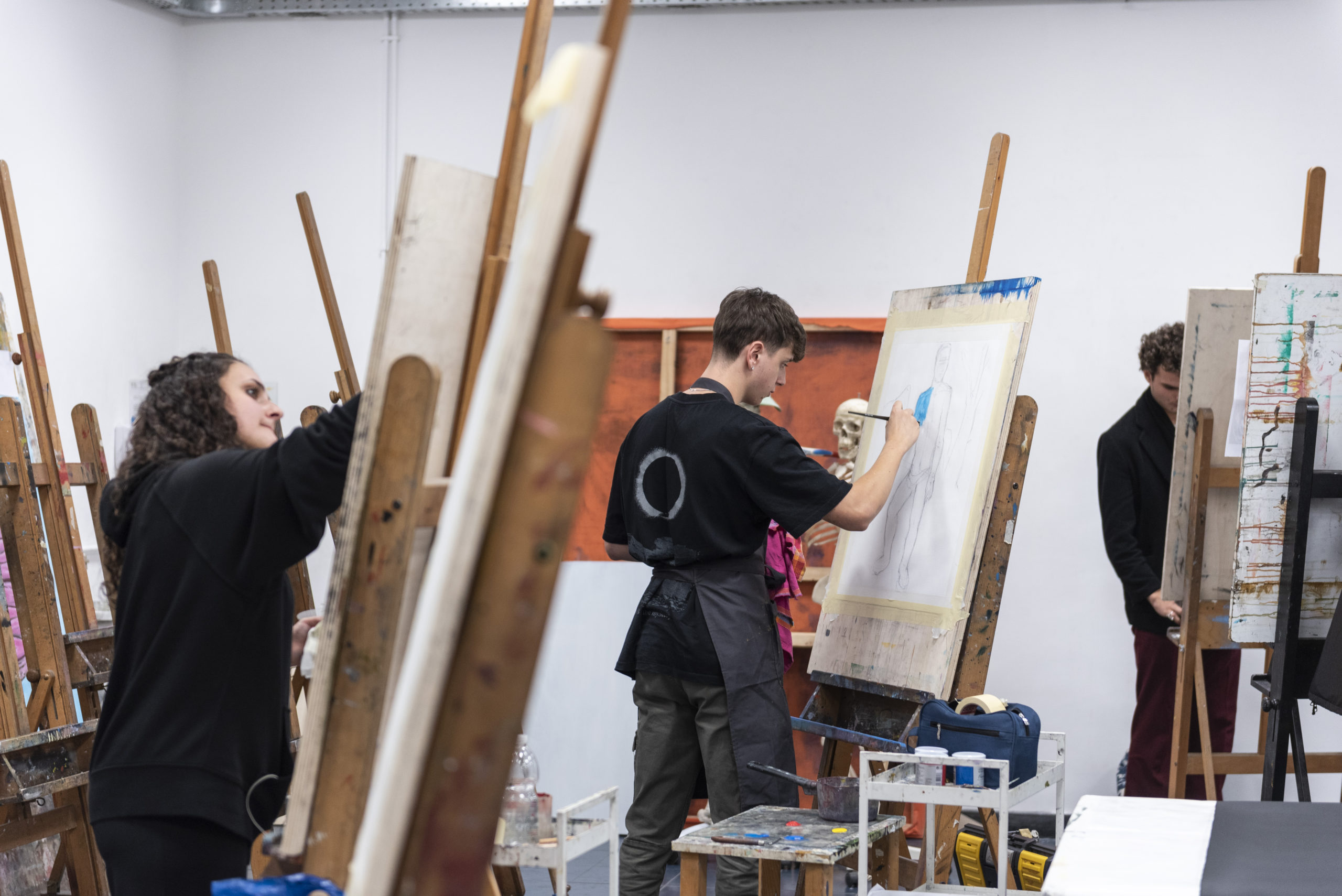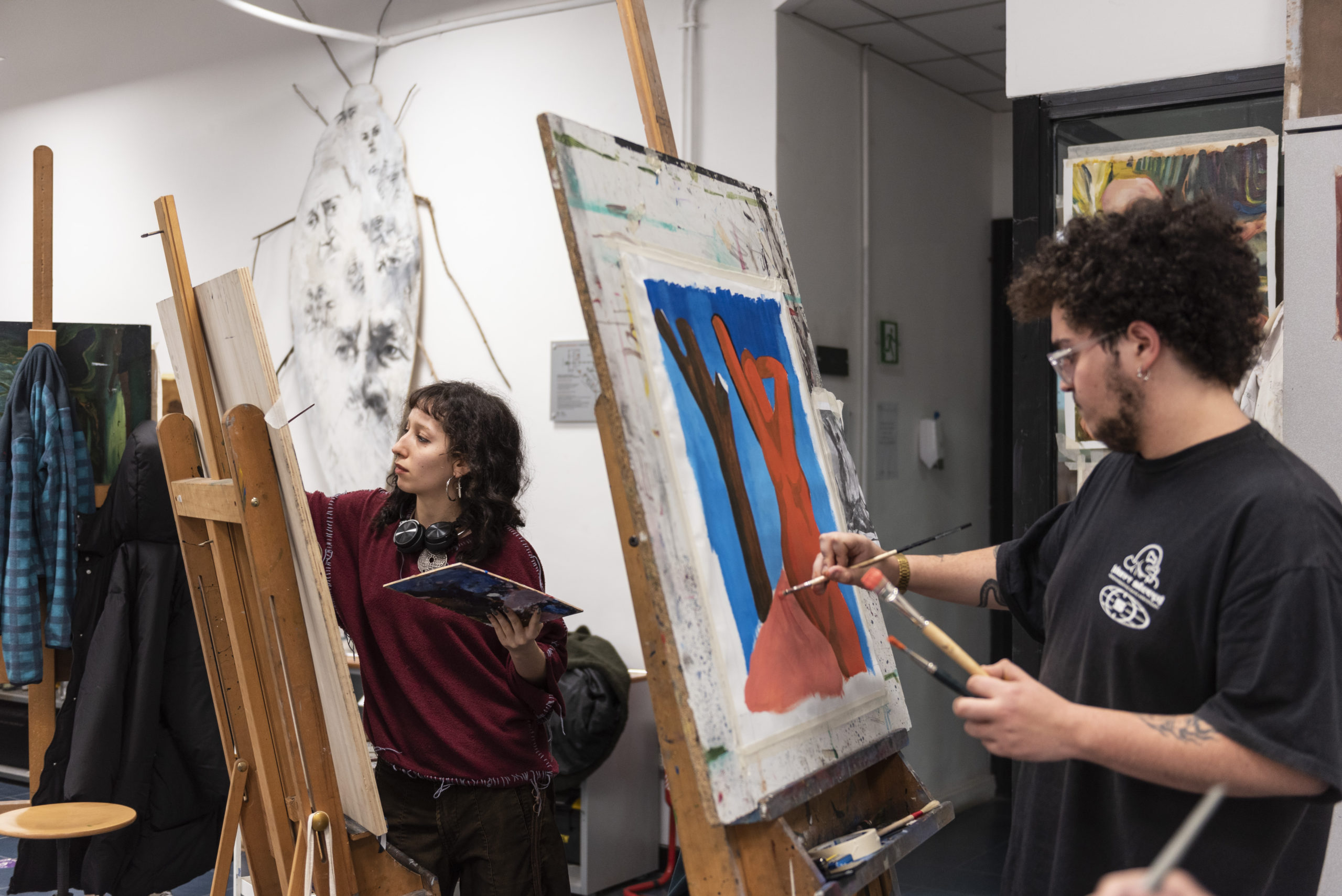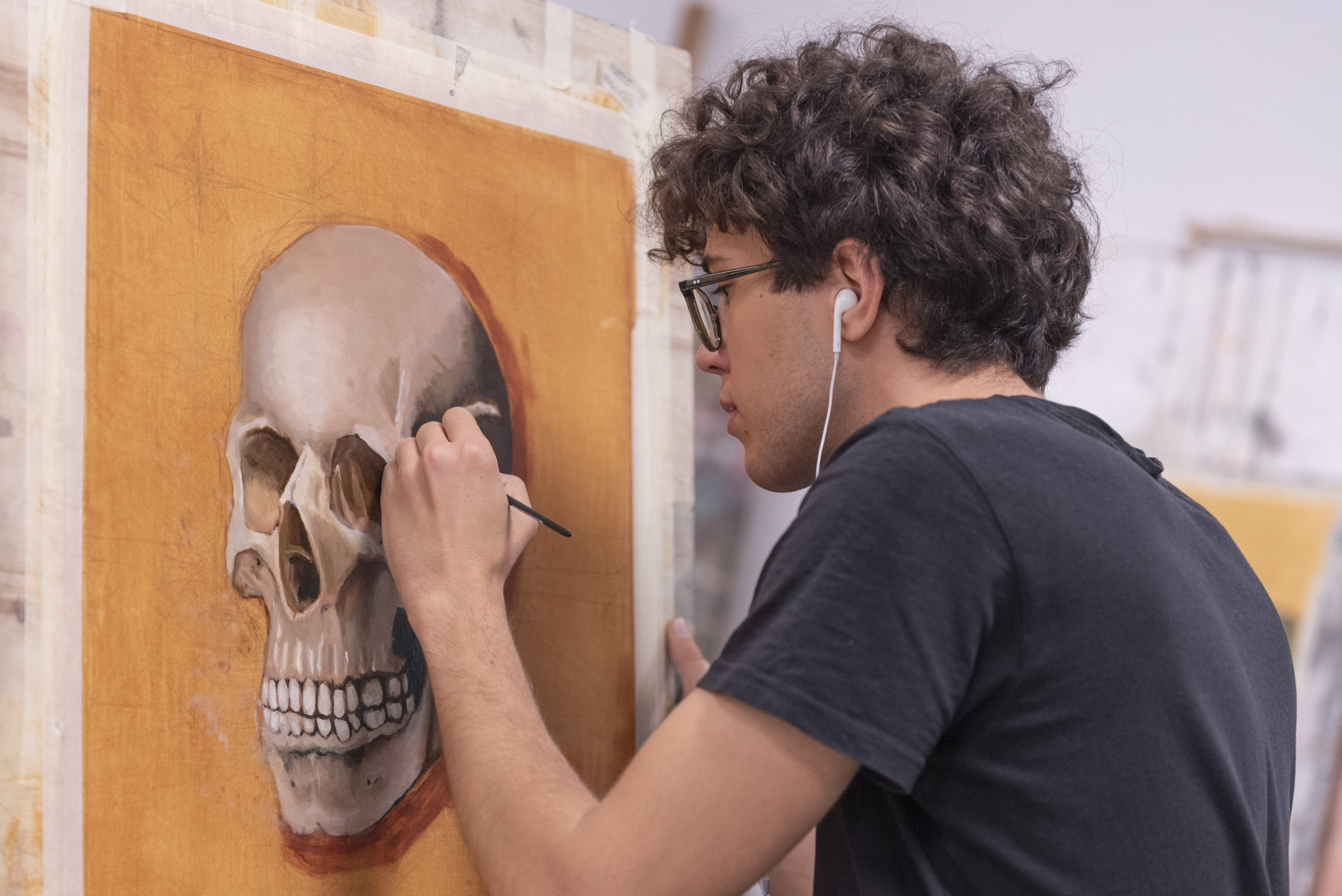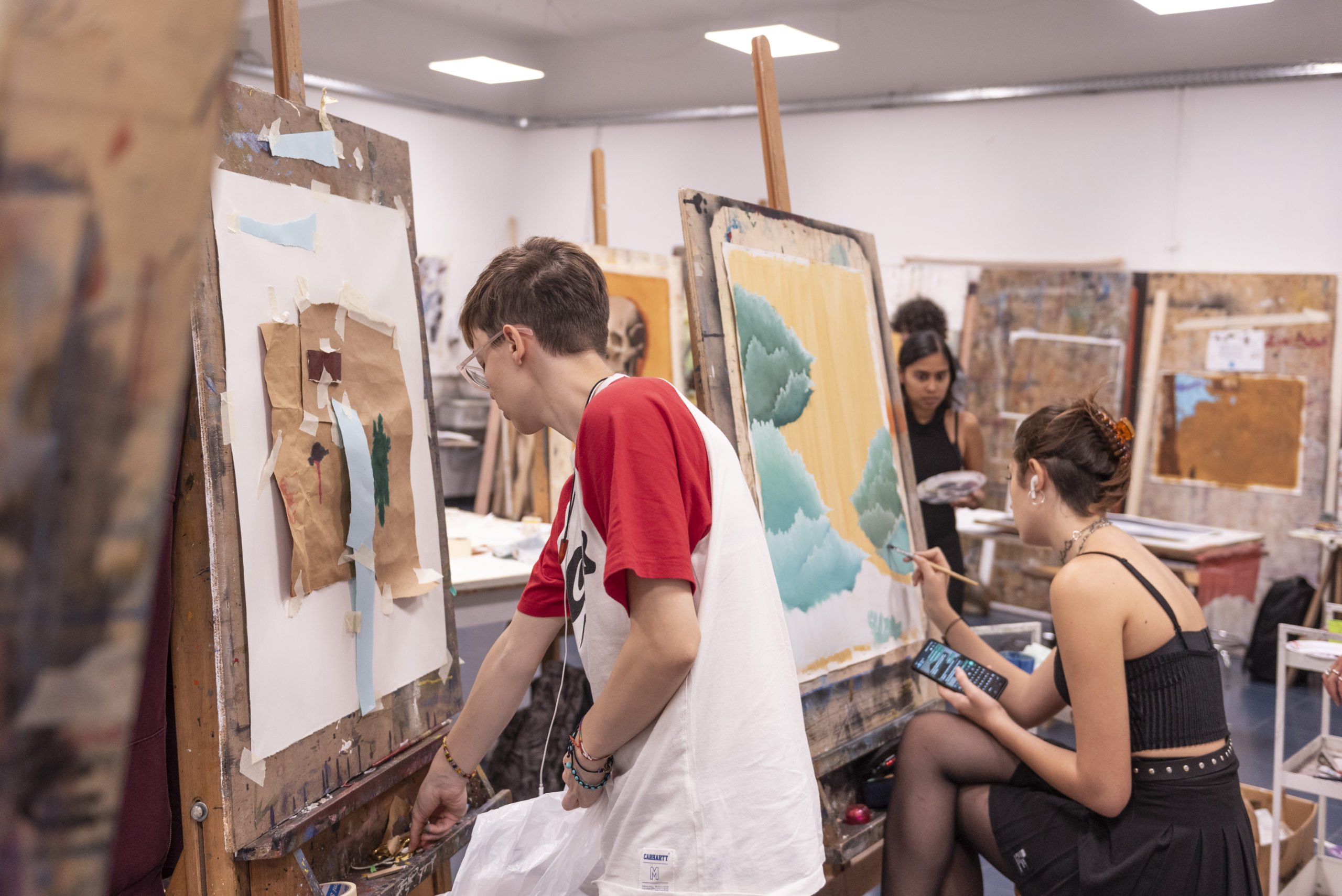Acquire Painting Techniques through a Practical Academy Course
At the end of the course, a certificate of attendance is issued, provided the participant attends at least 8 of the 10 scheduled lessons. This may include the potential recognition of 2 CFA credits.
The course in Painting Disciplines is designed for anyone interested in approaching the practice of painting through a series of group workshop sessions. The lab lessons will be preceded by brief theoretical presentations, supported by slideshow materials, focusing on color theory, basic rules of composition, various painting techniques and processes, and thematic exploration of different areas for artistic investigation and experimentation.
Following a path of personal research guided by the instructor, students will gain hands-on experience with the different technical approaches covered and practiced during the development of their projects. The aim is to help students uncover their own artistic voice, develop a personal mode of expression, cultivate an authentic perspective, and give visible form to their innate drive to create through painting.
Course type: group session – in-person
Participants: Max 15
Frequency: weekly, on Saturdays from 9am to 1pm or 2pm to 6pm
Duration: 10 lessons – total of 40 hours
Cost: € 590,00 in a single installment or in two installments (€ 300 each)
Materials: to be purchased, at the student’s expense
Language: Italian
Lecturer: Guido D’Angelo
Location: RUFA – Via degli Ausoni, 7 – Roma
Registrations open: October 5, 2025
Registration deadline: January 23, 2026
Objectives: Students develop their own style through a practical approach while learning all the basic theoretical and technical subjects.
Throughout the exploration of specific themes such as “the landscape between vision and composition”, “the self-portrait: seeing the invisible”, “still life: constructing and deconstructing towards abstract”, students will acquire the painting techniques with acrylics.
Other subjects will be the following:
– Colour theory, harmony and chromatic arrangement
– Composition
– Gouache, gestural, and material painting
Suggested bibliography:
Johannes Itten – Arte del colore, Ediz. Il Saggiatore, 2007
Alberto Boatto – Di tutti i colori. Da Matisse a Boetti, le scelte cromatiche dell’arte moderna,
Ediz. Laterza, 2012
Philip Ball – Colore. Una biografia. Tra arte storia e chimica, la bellezza e i misteri del mondo del colore, Ediz. BUR, 2014
Materials:
1 Matita Grafite (a scelta tra Caran d’Ache – Staedtler – Winsor & Newton – Conté à Paris – Koh i Noor – Faber Castell – Derwent) gradazioni: 2B o 4B; 1 gomma bianca Staedtler (o similare); 1 temperamatite; 1 confezione di fusaggine (bastoncini) Winsor & Newton (o di altra marca) grandzza media; 1 flacone di inchiostro di china nero da 30ml. Winsor & Newton; 10 fogli carta “carta da spolvero” formato 70X100 CM.; un rotolo di nastro adesivo in carta gialla di altezza 3 cm.
Materiali per la tecnica con i colori in emulsione vinilica ad acqua Flasche di Lefranc Bourgeois;
Colori: 1 bianco di titanio 022; 1 giallo giapponese chiaro 183; 1 rosso carminio 366; 1 blu oltremare 043; 1 blu ftalo 036; 1 terra di siena naturale 482; 1 terra d’ombra naturale 478; 1 nero 265; 1 barattolo di gesso bianco acrilico 500ml. Lefranc Bourgeois. Pennelli piatti con manico lungo in setola di maiale o sintetici forti (tipo duro – ogni marca ha la propria classificazione, che tendenzialmente va da 0 a 28): 1 pennello, misura media, numero 14 o 16; 1 pennello, misura piccola, numero 6 o 8; 1 pennello, misura piccola, numero 2; 2 pennellesse (piattine) in setola di maiale ( una n. 25 o n. 30 e una n. 50 o n. 60 – la marca Tintoretto offre un buon rapporto qualità-prezzo); 1 spatola d’acciaio (sufficiente per prendere il colore dal barattolo)
Tele: Prevedere una tela per lezione (misura 50 X 60 cm)
Altri materiali: piatti di plastica piani e grandi; contenitore per l’acqua (tipo scodella alta o barattolo); straccetti di tessuto per pulizia dei materiali e degli strumenti.
Please contact corsibrevi@unirufa.it for further information on purchase orders and discounts.
Guido D’Angelo, artist and lecturer in Painting, was born in 1971 in Rome where he lives and works. He graduated with honours from the Academy of Fine Arts in Rome with artist Gino Marotta, and received his Qualified Teaching Status in 2008. In 2009, he obtained a MA in Educational Sciences from the Niccolò Cusano University.
In 1996, he was among the founders of the ‘SANGIORGIO’ group, engaged in the technical experimentation of Multiverse Diaprojections, borrowed from the historical ‘Lanterna Magika’. In 2005, in Berlin, he set up the ALIACORPORA PROJECT, a collective project focused on the concepts of Action-Image-Environment. From 2006 to 2010 he collaborated with artist Paolo Cotani. In 2013, he founded the MAGTRE project. In 2020, he founded the KHLAB Laboratorio Kaspar Hauser.
His research focuses on painting intended as a language and process system. His work articulates and includes installation-like approaches with the use of different materials including rubber, metal, wood and fabric.
Since 2018, he has been a lecturer in Techniques and Technologies in RUFA.
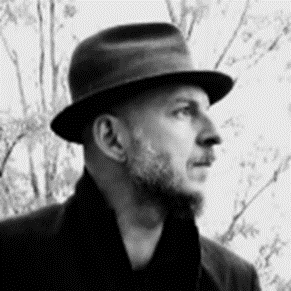
Instagram: magtrestudio__gdartproject
Website 1
Website 2
JANUARY
24/01/2026
31/01/2026
FEBRUARY
07/02/2026
14/02/2026
21/02/2026
28/02/2026
MARCH
07/03/2026
14/03/2026
21/03/2026
28/03/2026
Make-up dates*
11/04/2026
18/04/2026
*By “make-up dates” we refer to additional sessions proposed by RUFA in the event that a scheduled date is cancelled due to circumstances related to the instructor, the Academy, or force majeure.
Please note that make-up sessions are not provided for student absences.
RUFA Students and Alumni: 50% discount
Former students of RUFA Short Courses and Summer Programs 2024–25: 10% discount
University students: 5% discount (upon presenting a valid university ID or transcript)
Course package/groups/family: contact corsibrevi@unirufa.it for tailored solutions
For all enrolled students, without the need for specific requirements, fee reductions are available based on the date of registration:
Very Early Bird: entro il 31 ottobre 2025 → €501,50 (–15%)
Early Bird: dal 1 novembre al 23 dicembre 2025 → €531,00 (–10%)
All students holding certification pursuant to Law 104/92 are entitled to a 20% discount on the registration fee, regardless of the selected time frame.
To request it, documentation must be sent to the registrar’s office at corsibrevi@unirufa.it.
Enrolling in a short course entitles students, for the month in which the course takes place, to access special agreements with local businesses.
The benefits include discounts on creative materials and lunch breaks at venues near the campus locations.
Each year, the Short Courses Office will provide an updated list of participating businesses.
Fill in the form to be contacted by our team

